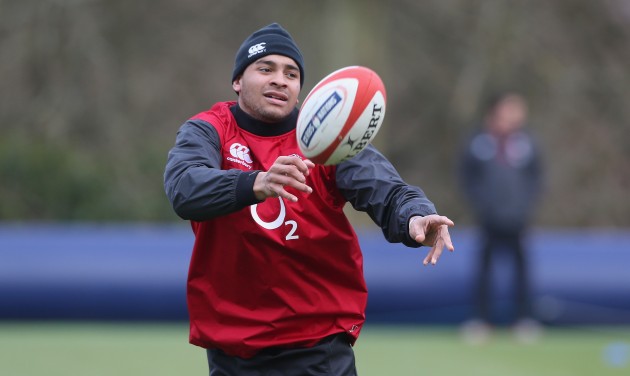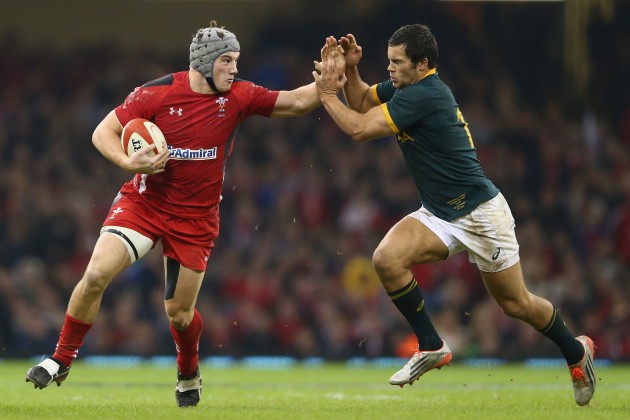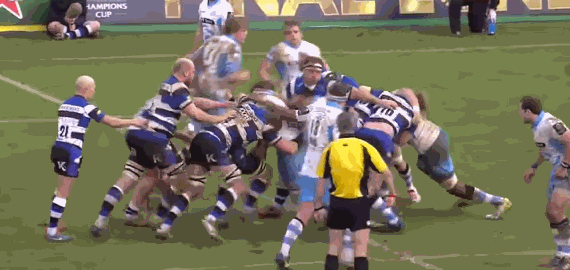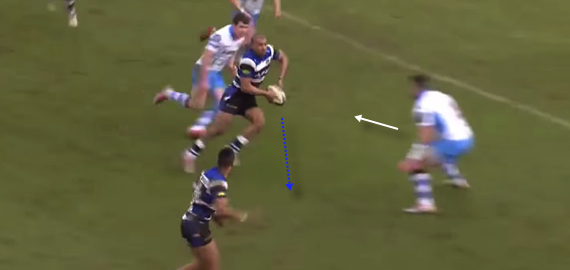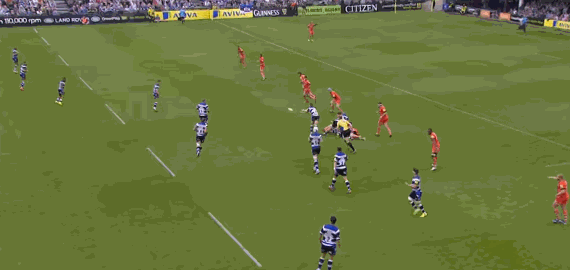In selecting Jonathan Joseph, Stuart Lancaster has deployed an in-form attacking weapon that could trouble his much-vaunted opposite number. We analyse a fascinating match-up.
Deep down, Stuart Lancaster must be pretty excited about Saturday lunchtime. By then, England’s head coach will be back over the Severn Bridge, his mind already turned to hosting Italy. Whatever the previous evening’s result, he will be able to stop answering questions about March 16, 2013 and move on.
A Grand Slam-shattering thrashing at the Millennium Stadium precisely 691 days ago has proved an inescapably seminal event in Lancaster’s tenure, with so much of its well-worn narrative centred on the venue and how a young team was enveloped by emotion, seemingly crowded out by the entire nation of Wales.
Those themes have been rehashed and regurgitated so many times that Lancaster felt the need to reinforce a fundamental truism yesterday morning.
“It’s a great stadium to play in with a new pitch, so it’ll be a fast game,” he said. “The atmosphere will be excellent, as always. But it’s about playing the opposition, not the stadium. About playing your opposite man and getting on top of him.”
Personal tussles are another enticing way of previewing what is set to be an enthralling Friday evening. A tête-à-tête between props Samson Lee and Joe Marler tops the bill and intrigue runs all the way down either teamsheet.
Though Lancaster is undeniably ravaged by injuries, the enviable strength in depth of English rugby means he reintroduces four British and Irish Lions – Tom Croft, Tom Youngs, Mako Vunipola and Dan Cole – plus a handful of the Aviva Premiership’s most influential performers.
In the latter category is Jonathan Joseph, deployed at outside centre. In scintillating fettle for Bath, he has promised to “be himself” in Cardiff. Coiled in the red corner, Jonathan Davies awaits. Here is a look at what to expect from a compelling match-up.
Gritting teeth on the gainline
Warren Gatland‘s around-the-corner attacking approach has been pilloried for its rigidity, but the powerful personnel involved still pose problems whatever their structure. A stocky, well-balanced runner, Davies is a dangerous figure in terms of winning collisions.
Though his summer move from Scarlets to Clermont has not been an entirely smooth transition, the Top 14 giants are beginning to utilise him nicely. This barge against Saracens a fortnight ago was typical of Davies at his best. It is a tenacious, clever angle with enough explosive strength to bump Brad Barritt off. The Clermont forwards can march beyond the ball easily:
On the back foot and disorganised from this surge, Saracens were powerless to prevent Nick Abdendanon darting over just three phases later. Not previously heralded for qualities, Joseph must be courageous and proactive in order to quell Davies.
Luckily, this season has seen exactly that, as Andy Farrell highlighted when England’s Six Nations squad was announced. In a famous 35-18 defeat of Toulouse, Joseph made the second most tackles among the Bath side.
Watch how he responds to turnover ball from this lost lineout, first pressing up on burly All Black Luke McAllister. Joseph stays on his feet to contribute to the next phase, in which he does just enough to fell hooker Corey Flynn on an inside ball:
Putting one’s body on the line – even if the concept has long passed into cliché – does not come instinctively to every player. Sheer bravery is a mind-set and some need to work hard in order for it to manifest itself. For that reason, this stunning try-saver against Glasgow Warriors would not have gone unnoticed by Lancaster:
A closer look shows Joseph’s desire to scramble across, married to sound technique and athleticism in order to shepherd Sean Maitland away from the whitewash:
Each of those qualities will be required when Wales are in possession tomorrow. But Joseph can be confident of causing trouble too.
Gliding and guessing
Outside centre is perhaps the most difficult position to defend. Often isolated and exposed, one mistake can easily ship a score to clinical rivals. Unfortunately for Wales, South Africa found joy in and around Davies’ channel this summer. First, watch this try from the first Test in Durban:
Willie Le Roux’s break and chip are instrumental in Bryan Habana dotting down. That said, Davies is responsible for the primary opening. Failing to trust Dan Biggar on his inside, he needlessly pinches in to cover JP Pietersen. Morné Steyn‘s cut-out pass punishes a poor decision:
Now to the second Test in Nelspruit, and one of the tries of 2014:
More Le Roux magic and another eye-catching effort, on this occasion for Cornal Hendricks. But again it is a midfield muddle that brings about the opening. Watch as Le Roux takes the ball to the line and passes to Pietersen:
While it should be stressed that Wales were down to 13 men at this point, they are numbered up well until Davies is slow to drift. The direction of his shoulders here demonstrate how he is uncertain of Jamie Roberts‘ ability to cover across:
A split second of hesitation gives Pietersen a two-on-one. Davies is outstripped as Alex Cuthbert rightly drifts onto the last man and the break is made.
Without wishing to pile on criticism, Davies would also have been furious with this try later on in a heartbreaking 31-30 loss. Track him and watch the indecision. He never takes his eyes off Le Roux:
Once more, it is a lack of confidence in his inside man Ken Owens – betrayed by body position –rather than physicality that Le Roux capitalises on. Joseph is easily capable of taking advantage as well, as this piece of play later in the Glasgow game shows:
Mike Catt likened his then-London Irish protégé to Jeremy Guscott back in 2012. This outside arc and pass, fashioning an opportunity from a two-on-two situation, is a neat exhibition of that thinking. Take it in two parts, initially a jink on the direction of George Ford‘s pass to put Mark Bennett off balance:
Then, as Sean Lamont steps in, a perfectly-timed pop to Anthony Watson, who should have scored:
Joseph’s pace and copybook habit of holding the ball in two hands means that there is no easy solution. If he does manage to scamper onto an outside shoulder and the wide defender remains man-for-man, he is just as threatening. Sometimes the pass is not needed. Just ask Niall Morris and Mathew Tait of Leicester Tigers:
One seemingly innocuous instance during Clermont’s win over Saracens encapsulated how Davies will be looking to hamper Joseph:
As the Premiership club look to spread the ball, Davies executes a ‘soft’ drift flawlessly, staying narrow and connected with defenders either side with his shoulders angled towards the touchline – therefore not closing himself off. Saracens are forced to kick.
This screenshot shows Davies, pointing with his right arm, can also organise coverage of the inside pass:
Something from nothing
Any Anglo-Welsh tie will go through periods of unapologetic attrition. Close-quarter phase-play, breakdown and set-piece will go a long way towards deciding Friday’s outcome. However, things might open up as each half drags on.
Any spectacle is enhanced by the presence of gifted players who can conjure tries from nowhere – just as Davies managed against Sale back in October…
…and Joseph did at the Stade Ernest-Wallon last month:
Speed, vision, a delicate grubber, footwork and a composed pass – these tries contain plenty of common ground. Indeed, both men are consummate, classy operators. Their clash will be a fascinating facet of Friday night.





